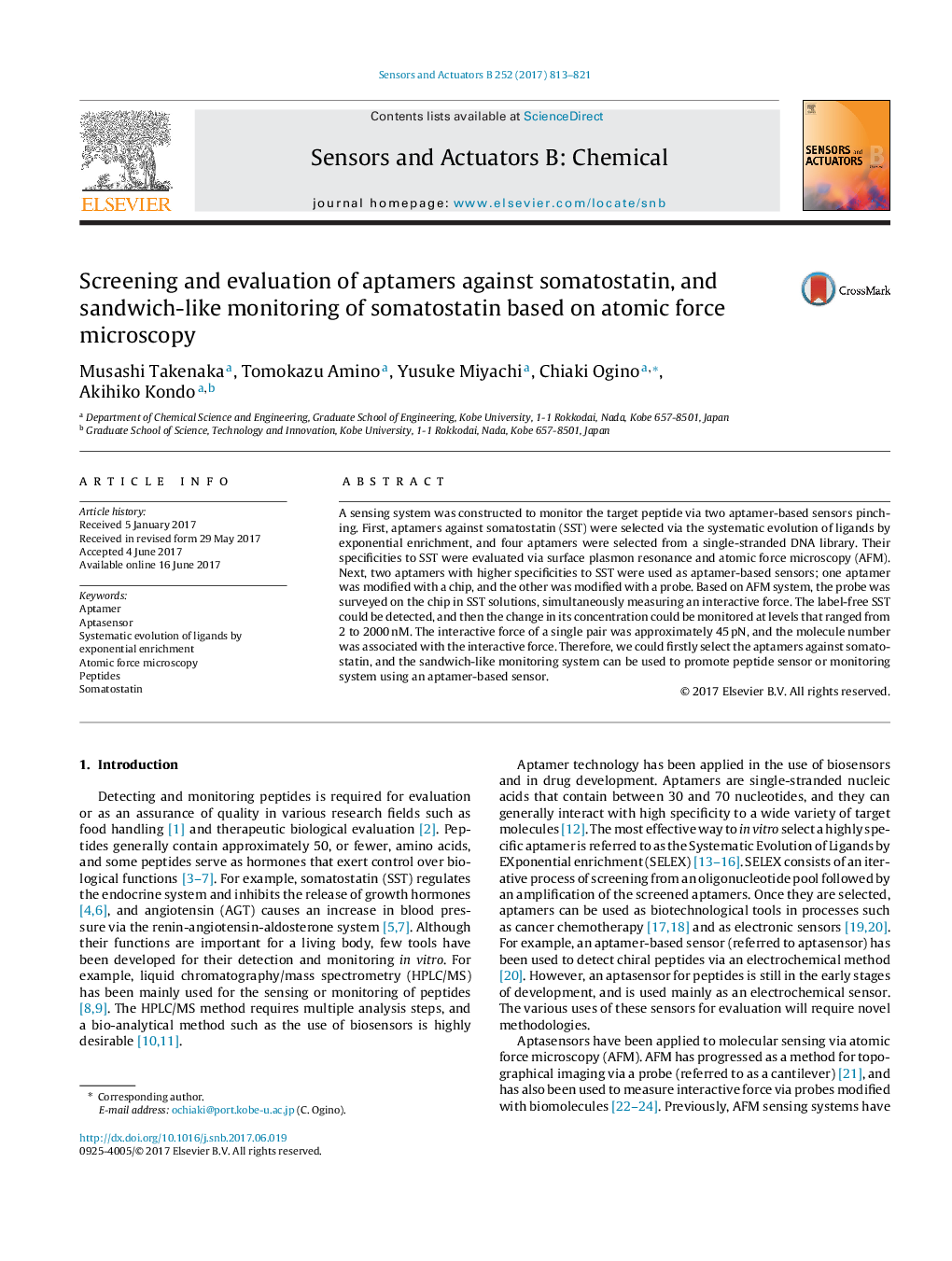| Article ID | Journal | Published Year | Pages | File Type |
|---|---|---|---|---|
| 5009136 | Sensors and Actuators B: Chemical | 2017 | 9 Pages |
â¢The selected aptamers against somatostatin (SST) were evaluated with their structures and functions, such as affinity or interaction.â¢Two aptamers with the similar sequence indicated much difference affinity and interaction against SST.â¢Two aptamer-based AFM aptasensors enable the sensing of SST.â¢The SST concentration could be monitored to use an interactive force as an index and Hill model.â¢The SST number can be estimated via a statistical analysis.
A sensing system was constructed to monitor the target peptide via two aptamer-based sensors pinching. First, aptamers against somatostatin (SST) were selected via the systematic evolution of ligands by exponential enrichment, and four aptamers were selected from a single-stranded DNA library. Their specificities to SST were evaluated via surface plasmon resonance and atomic force microscopy (AFM). Next, two aptamers with higher specificities to SST were used as aptamer-based sensors; one aptamer was modified with a chip, and the other was modified with a probe. Based on AFM system, the probe was surveyed on the chip in SST solutions, simultaneously measuring an interactive force. The label-free SST could be detected, and then the change in its concentration could be monitored at levels that ranged from 2 to 2000Â nM. The interactive force of a single pair was approximately 45Â pN, and the molecule number was associated with the interactive force. Therefore, we could firstly select the aptamers against somatostatin, and the sandwich-like monitoring system can be used to promote peptide sensor or monitoring system using an aptamer-based sensor.
